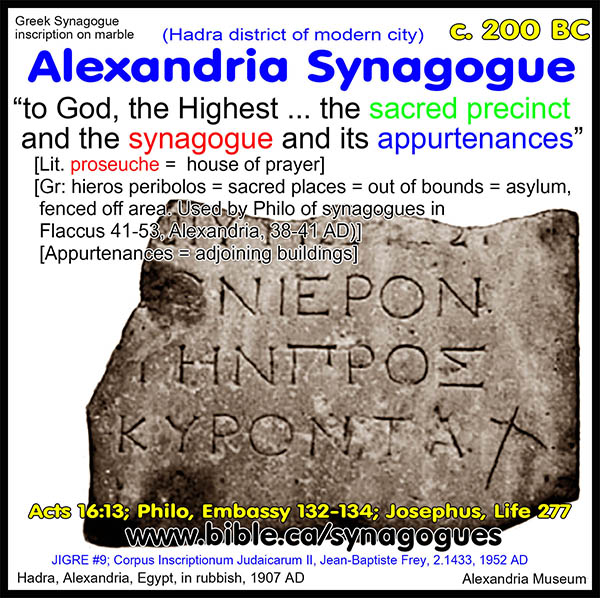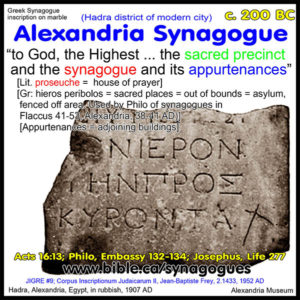My favorite part of How the Bible Became Holy is the story of how the Jewish community of Alexandria, a Greek-speaking diaspora community in the Hellenistic Ptolemaic empire, who were excluded from cultural and civic institutions centered around the study of Homeric literature and greek philosophy, developed synagogues as institutions for worship and study centered around the public reading of Greek translations of the Hebrew bible.
In the intellectual and cultural context where Greek philosophy was studied as a guide for living a good life, the works of the Bible were similarly employed by Alexandrian Jews as the base for homiletic teachings. In this persuasive telling, the revered, central, literary and normative roles of the Bible evolved as a backformation from Hellenistic cultural practices.
Other elements of the book are interesting, but sometimes less persuasive. Michael Satlow, professor of religious studies and Judaic studies at Brown University, traces the evolution of Biblical narratives starting with elements of the Hebrew Bible in 10th century BCE through their roles and canonization in Rabbinic Judaism and institutional Christianity.
In the 10th Century BCE Satlow explains the emergence of shared stories helping to unite a loose Israelite confederation, and fragments of law codes and prophesies and proverbs collected by scribes under the Judahite Kingdom in the 8th to 6th centuries BCE. Satlow make a case that biblical texts did not have a high profile during the biblical period. Literacy was low, and written texts, including components of law codes adapted from other law codes circulating at the time, were scribal exercises written largely for an audience of scribes. But positive evidence is minimal for this or other hypotheses about the origins of material from this period.
Satlow brings forward another set of hypotheses with fragmentary evidence relating to the evolving roles of the bible among the Pharisees and Saducees, feuding Jewish political/social parties and schools of religious thought in the century before the destruction of the Temple in 72CE. Satlow holds to a the scholarly opinion that the small, ascetic religious sect that decamped to desert by the Dead Sea, and left behind a large repository of texts known as the Dead Sea Scrolls, was a Saducee splinter group which fled vicious Hasmonean politics in the 1st Century BCE (other schools of thoughts hold that the Qumran group were Essenes). In a volatile age, the Qumran group sought certainty through the use of revered written texts as the source of oracular prophesies and secret codes, helping to pioneer these uses of biblical texts.
Meanwhile, Pharisees, Satlow argues, emerged from a rural aristocracy relying more on oral traditions than texts. However, because oral traditions weren’t written down, there is minimal evidence, other than the later-written Rabbinic traditions that asserted continuously transmitted oral traditions back to Sinai. Rabbis began reluctantly committing the “oral torah” to writing starting with the Mishnah in the 3rd Century of the Common Era. Satlow observes that the Mishna is surprisingly lacking in scriptural citations, and attributes this to an attitude de-emphasizing scripture; but could it be because the scriptural connections remained part of an oral layer, according to the stories the Rabbis themselves told?
The distinctive Jewish treatment of biblical texts, where the text itself is frozen and revered, while new, strata of creative legal, homiletic, and literary interpretation build on the text, dates to the Talmudic rabbis and their descendants, which Satlow attributes to a convergence of Pharasaic oral tradition and Saducee reverence for text.
The book also explores the roles of the scriptural tradition in emerging Christian Gospel literature. Use of scripture varied by audience, as Christianity spread among Gentiles and Jews; works aimed at Jewish audiences used more scripture than works aimed at Gentile audiences. Christians built on the use of biblical texts as oracles to add a superstructure interpreting previous writings as predicting and foreshadowing the emergence of Jesus as Messiah. Apparently, Christians got around to creating a fixed canon in response to movements to exclude perceived heresy. Readers who are more familiar with the evolving role of scriptures in Christianity will have stronger reactions to these parts of the book.
How the Bible Became Holy provides interesting food for thought about how this set of ancient texts books evolved the various attributes that make them “biblical” – objects that are treated with reverence, that serve as central literary texts that are interpreted on an ongoing basis, and are used as guidance for religious adherents’ lives.

